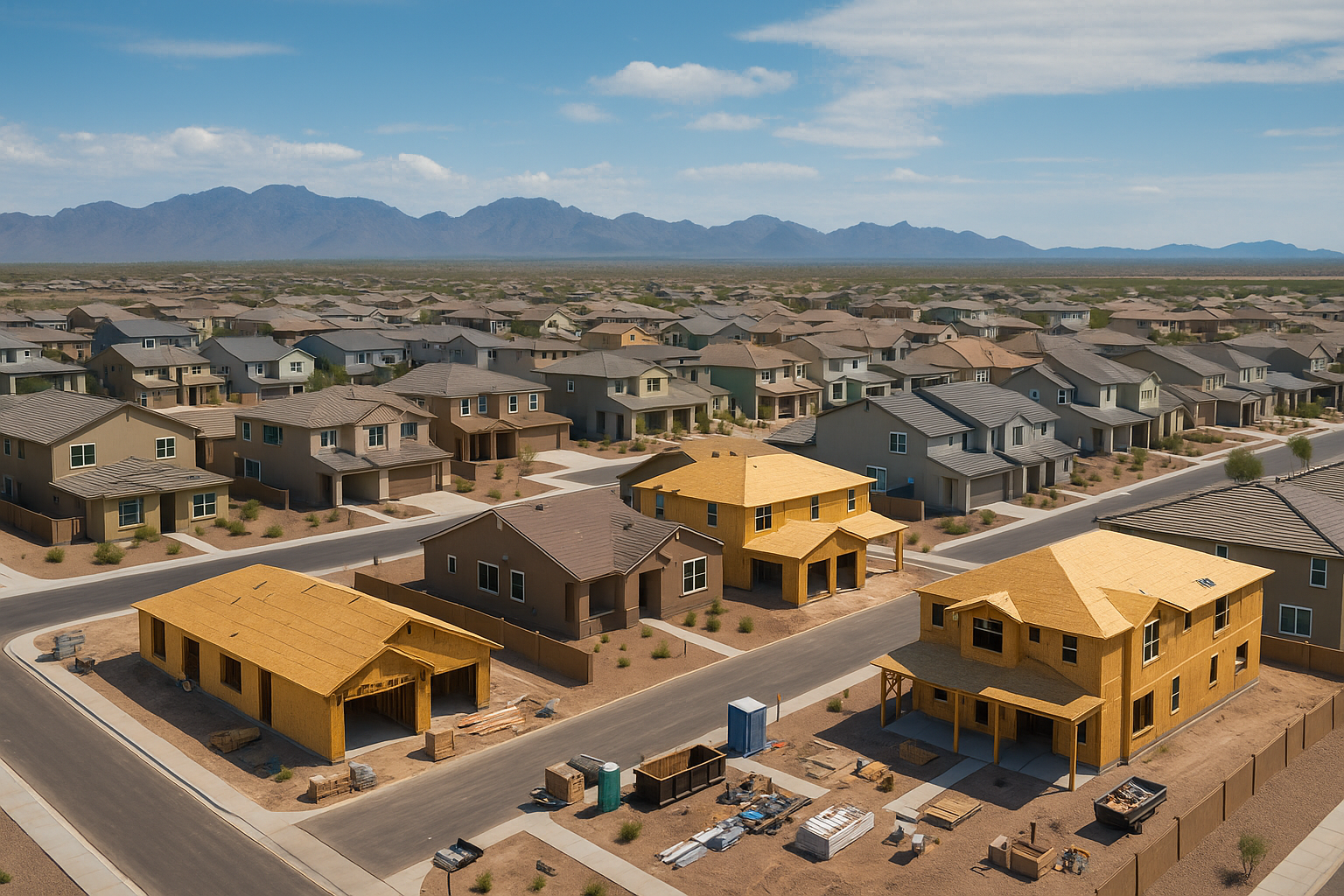Buckeye isn’t the quiet little town it once was. Over the past decade, it has become one of the most watched areas for growth in the West Valley — and the pace isn’t slowing down anytime soon.
With new master-planned communities, major infrastructure projects, and commercial expansion on the horizon, Buckeye is positioned to become one of Arizona’s most influential cities for real estate investment and development.
Buckeye’s Growth Story
Once considered a distant suburb of Phoenix, Buckeye has experienced incredible transformation. The population has surpassed 100,000 residents and is projected to triple over the next 15 years.
Master-planned communities like Verrado, Tartesso, and the upcoming Teravalis (Douglas Ranch) are setting the tone for a new era of intentional design — combining family-friendly amenities, walkable neighborhoods, and sustainable development principles.
The city approved more than 2,900 new residential units for 2025 alone, and the long-term vision includes mixed-use centers, retail corridors, and growing employment hubs to balance housing and commerce.
What’s Driving the Growth
Land Availability
Buckeye still has vast stretches of undeveloped land, which makes it ideal for builders to design large-scale, master-planned communities with room for amenities, green space, and future expansion.
Commercial & Industrial Expansion
It’s not just residential. Developers are investing heavily in industrial parks, logistics hubs, and data centers, capitalizing on Buckeye’s proximity to major highways and utility infrastructure. The city recently approved a 160-acre site for future data center development, signaling continued diversification in its economy.
Infrastructure Investment
Major upgrades to roadways, water systems, and energy infrastructure are already underway. The goal is to prepare Buckeye for population growth while maintaining quality of life for residents.
The Water Challenge
Water availability remains a major talking point. State regulations have paused new housing approvals that rely solely on groundwater. However, Buckeye is working with developers to identify alternative water sources and ensure long-term sustainability — a critical step for continued growth.
Emerging Trends to Watch
Build-to-Rent Communities: Developers are introducing entire neighborhoods built for long-term renters — a trend meeting strong demand across the West Valley.
Mixed-Use Planning: Expect to see more communities integrating residential, retail, and office spaces for true live-work-play convenience. If you’re interested in what makes a great neighborhood design, check out Trulia’s guide on spotting a walkable neighborhood.
Sustainable Design: Energy-efficient construction, reclaimed water systems, and solar-ready homes are becoming part of Buckeye’s identity.
Phased Development: Builders are moving forward strategically, aligning construction phases with infrastructure and water availability.
Challenges on the Horizon
While opportunity is abundant, Buckeye’s rapid growth comes with challenges:
Water and utility planning
Rising material and labor costs
Infrastructure capacity
Balancing urban expansion with open land preservation
City leaders and developers will need to collaborate closely to ensure that growth remains responsible and sustainable.
What This Means for Property Owners and Investors
For property owners, rising development brings increased property values and new opportunities to sell or lease at premium rates.
Investors are already eyeing Buckeye as a long-term growth market — not just for residential properties, but for commercial, industrial, and build-to-rent opportunities as well.
If you own land in or near Buckeye, now is the time to stay informed about infrastructure planning and zoning changes that could impact future value.
The Bottom Line
Buckeye is evolving from a growing suburb into a major economic player in the West Valley. Its combination of land availability, strategic location, and long-term development vision make it one of Arizona’s most exciting areas to watch in the coming decade.
If you’re curious about how these changes might impact your property value or development potential, Real Estate Brokers of Arizona can help you navigate your options with expert local insight.
Contact us today to start the conversation.
Related Articles
The Cost of Deferred Maintenance: Why Landlords Should Act Fast
How New Developments Are Changing the Gilbert Real Estate Landscape
Why Phoenix Remains One of the Hottest Real Estate Markets in the U.S.

